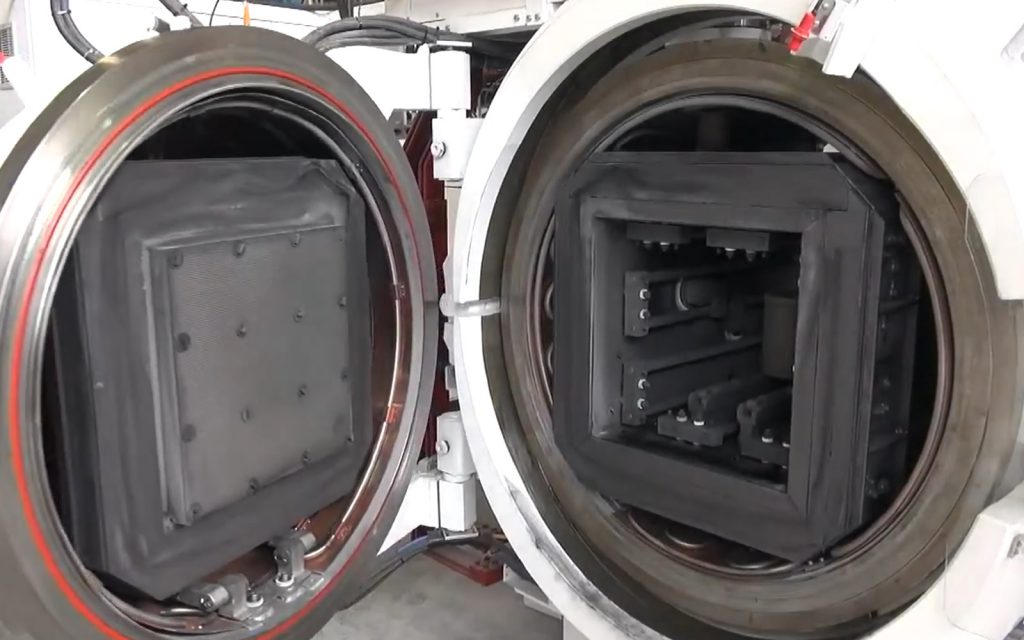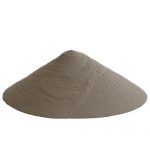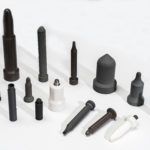Sintering is arguably the most important step in the ceramics manufacturing process. It is the phase when the green-body is fired at temperatures approaching the ceramic powder’s melting point, causing the consolidated raw material to undergo numerous chemical and physical changes. Several distinct sintering methods exist, but each one essentially exploits the same properties of ceramics to form a densified workpiece with desired properties and material characteristics.
Sintering: An Essential Step in Ceramics Engineering
The first step in achieving a dense ceramic article is the processing and forming of raw materials into a consolidated, near-net shape. This is generally achieved by pressing, casting, injection moulding or extruding a feedstock containing the ceramic powder which may subsequently be re-worked via green-machining. However, the fine porous structure of the ceramic green-body can only be effectively eliminated via sintering, which may be conducted with or without applied pressure.
The sintering atmosphere and pressure are determined by the material and the sintering method. For example, some specific grades of alumina (Al2O3), zirconia (ZrO2), and silicon carbide (SiC) are densified through solid-state sintering at high temperatures in a range of high pressure atmospheres. This is primarily used to stabilise the ceramic during sintering, facilitating the diffusion of powder particles to achieve a strong, densified bulk material.
However, many years of research into the sintering dynamics of advanced ceramics has demonstrated the ability of achieving a precise ceramic part without using higher pressures or utilising chemical stabilisers in the raw material, particularly for non-oxide ceramics.
Pressurised or Pressureless Sintering?
The atmospheric conditions required to sinter a given ceramic are generally determined by the material’s properties. Silicon nitride (Si3N4), one of the world’s most advanced technical ceramics, posed numerous challenges to the ceramics engineering market when it emerged in the mid-nineteenth century. This was primarily a result of the outstanding thermomechanical properties of the material making it extremely difficult to fabricate.
Among the first techniques used to produce fully-dense Si3N4 was hot pressing, which used both additive flux agents and high-pressures to form simple high-performance shapes. The immediate drawbacks of this were the dimension limitations for the end-product, which would typically require expensive diamond grinding after sintering to reach appropriate tolerances.
Pressureless sintering of Si3N4 was initially deemed impossible, until the discovery of sialons (Silicon—aluminium—oxygen—nitrogen) in the 1970s. In the presence of sintering additives such as magnesia (MgO) or yttria (Y2O3) to the composition and sintering the green body in a partially-pressurised nitrogen atmosphere enabled the generation of a material that was isostructural to Si3N4 at a fraction of the cost.
While pressureless sintering is often desired due to the associated cost benefits, high pressure remains crucial in ceramics engineering for the generation of components with low-additive compositions. This is increasingly important for new and emerging ceramics comprising novel chemical arrangements. Applying high pressures also decreases the likelihood that nitrogen in the working atmosphere with volatilise at sintering temperatures.
Ceramics Engineering with International Syalons
International Syalons is the UK’s foremost ceramics engineering specialist, with unmatched expertise in the production of advanced silicon nitride derivatives. We have both pressurised and pressureless sintering capabilities, enabling cost-effective development of ceramic materials and robust exploration of proprietary ceramic compositions.
If you have any questions about ceramics engineering with International Syalons, please do not hesitate to contact us directly.


